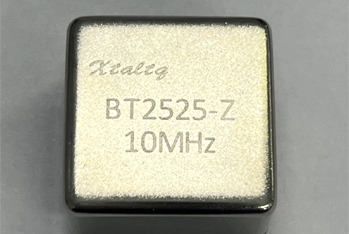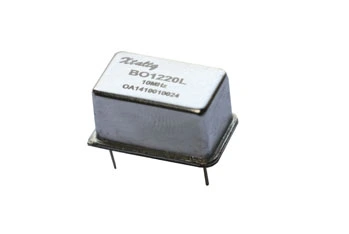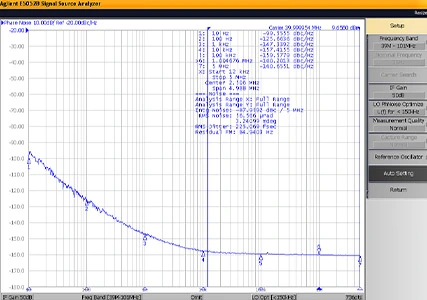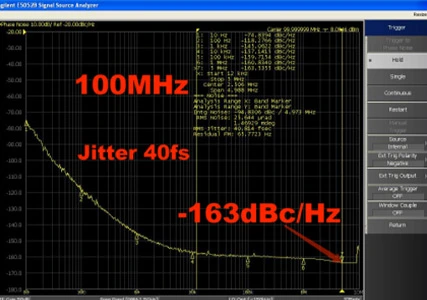Voltage-Controlled Oscillator (VCO), an essential frequency source device in electronic engineering, allows for precise control of frequency output through external voltage. Due to its excellent frequency modulation characteristics, VCO has widespread applications in communications, measurement, control, and other fields. In order to enhance its market competitiveness, XtalTQ Technology has invested in research and development in the field of GHz time-frequency control for high-frequency oscillations, and hereby introduces the XVCO55BE, which can be applied in mid-to-high-end electronic devices in both civil and military fields.
Product Features:
Frequency Tunability: The core advantage of VCO lies in its ability to generate signals of different frequencies based on changes in input voltage. This frequency tunability makes VCO highly useful in systems requiring dynamic frequency adjustment, such as wireless communications, radar systems, and frequency synthesizers.
Versatile Applications: Due to its frequency tunability and stability, VCO has a wide range of applications. Besides wireless communications and radar systems, VCO is also commonly used in circuits such as frequency synthesizers and Phase-Locked Loops (PLLs), serving as an essential component in communication system circuits.
Technological Maturity: VCO technology has been developed for many years, and there are various mature VCO products available in the market. These products have undergone long-term market validation and optimization, offering stable and reliable performance. Designers can select suitable VCO products based on specific requirements.
High Integration: With the development of integrated circuit technology, VCO can be integrated into smaller chips, achieving miniaturization and high integration. This helps reduce the overall size and cost of the system, improving its reliability and stability.
Intelligent Trends: Modern VCO research is focusing on utilizing technologies such as machine learning to achieve adaptive tuning for performance optimization. This intelligent trend enables VCO to better adapt to complex and ever-changing application environments, improving the system's adaptability and intelligence level.
Communication Domain
In the communications domain, Voltage Controlled Oscillators serve as the core component of frequency synthesizers. In wireless communication systems, by adjusting the frequency of VCO, functions such as frequency synthesis, modulation, and demodulation can be realized, supporting the transmission of wireless communication. For instance, in mobile phones, base stations, and other mobile communication devices, VCO is used to generate carrier signals and integrated into frequency synthesizers to adjust the operating frequency in real-time according to communication protocol requirements. Furthermore, in frequency hopping or spread spectrum communication technologies, VCO is employed to quickly switch signal frequencies, enhancing anti-interference capabilities and confidentiality.

Test and Measurement Field
In the measurement field, VCO also plays a crucial role. Electronic measurement instruments, such as spectrum analyzers and signal generators, require precise and stable frequency sources. The accuracy and stability of VCO's frequency have a direct impact on the accuracy of measurement results. In electronic test instruments, VCO is used to produce adjustable signal sources, assisting engineers in signal analysis, calibration, or simulating real-world signal conditions.
The control field is equally reliant on VCO. In systems requiring precise frequency control, such as Phase-Locked Loop (PLL) circuits, VCO is an indispensable component. By adjusting the frequency of VCO, frequency locking and synchronization of the system can be achieved. For example, in radar signal transmission, stable and rapidly adjustable frequency signals are required, which VCO can provide to generate pulsed signals of different frequencies. In high-speed data transmission and synchronization circuits, VCO supplies precise clock signals to ensure correct sampling and recovery of data streams.
Smaller and Stronger
With technological advancements, VCOs are continuously evolving. Miniaturization is one significant trend. As integrated circuit technology progresses, VCOs are becoming smaller and more integrated, contributing to the reduction in the overall system size and enhancing system reliability. Additionally, with increasing application demands, the performance requirements for VCOs are also rising, such as needing higher frequency ranges, lower phase noise, and faster frequency modulation speeds.

The Intelligent Future
Intelligence is another important development direction for VCOs. Modern VCO research focuses on utilizing machine learning and other technologies to achieve adaptive tuning for performance optimization. Future VCOs may possess stronger self-adjustment and optimization capabilities, such as automatically adjusting frequencies through built-in algorithms to adapt to different working environments and application needs.
This is the first one.
 English
English français
français Deutsch
Deutsch Español
Español русский
русский







